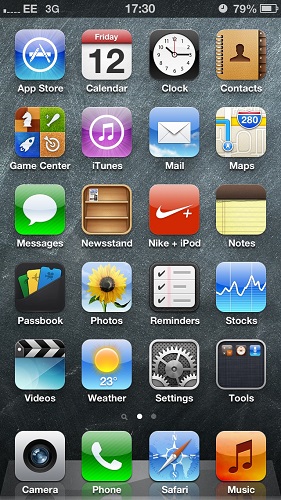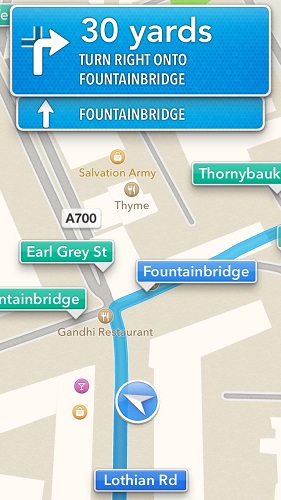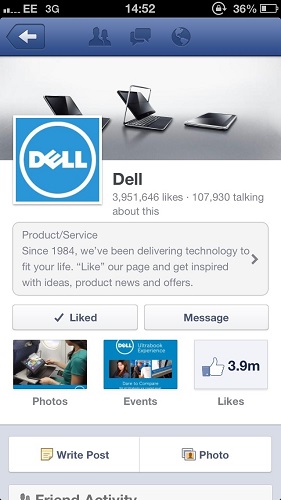This article was updated in 2014.
Introduction
The release of the new iPhone was no surprise at all (apart from the name - it's actually the 6th iteration of the iPhone), and if you followed the tech news recently you would have noticed that most of the suspected features that have been under observation for months have been included, to some extent. This article intends to review these features and ultimately the iPhone 5. As you may have noticed in one of my articles I was an owner of an iPhone 3GS until about 18 months ago, when I decided to try out a Windows Phone 7 device known as the HTC HD 7. In the end, this was a very bad move.
This article has been written in part on Pages on the iPhone 5 being reviewed.
Admittedly, I have been using iOS 6 for over a month now due to the fact that I have owned an iPod Touch for about a year (a stop-gap solution whilst owning a Windows Phone 7 device) and I have to say it is much better in terms of hardware usage than iOS 5. The exact model number that I will be reviewing in this report is MD297B, better known as an iPhone 5 16GB Black, on the Orange (EE) network.
Long Term Evolution or LTE
One of the key new features of the new iPhone is the incorporation of LTE better known as 4G. This is something that some reviewers out there have stated was in the iPhone 4, which is, of course, false. I must point out; that this next section will be related to the UK only. This is a new band of phone signal that has come to the UK and provides a much faster connection than the already fast 3G signals in the country and it will readily be available on iPhone. As you may recall, iPad 3 when it was released featured LTE but even when 4G came to the UK, it would never support it because it only supported the US LTE bands. The iPhone has fixed this problem in the UK, now supporting the T-Mobile Orange alliance known as Everything Everywhere (EE). O2 and Vodafone are supporting LTE, but the iPhone does not support their bands. 4G promises to be the future.
More to see with a larger display
The next improvement worth mentioning is the 4-inch display. This is the first time that Apple has changed the appearance of the whole phone, and to that end, increased the screen size. To show just how tall the display is, take a look at the image previously shown. This new screen looks much better, but if you prefer small phones then this might not be the iPhone for you! I've been a fan of taller phones for about 2 years, hence why I gave up my iPhone 3GS for a HTC HD 7 just over 18 months ago. I could not leave the taller screen behind. When I heard in June that an iPhone with a taller screen was to be announced I thought it was going to be the perfect iPhone (which it's not - but we'll come to that later).
So the screen itself measures 4 inches and has a resolution of 1136 by 640 compared with the previous iPhone 4S display which measured 3.5 inches with a resolution of 960 by 640. Notice that the width of the display has not increased. This increased height makes the aspect ratio in landscape 16:9 (1136/640=1.78*16=9).
This is great for watching HD movies as there is no longer any letterboxing during an HD movie. Both models have Retina displays which accounts for a pixel density of 326ppi. Apple also improved the colour gamut of the display considerably according to Chris Heinonen of AnandTech.
Apple Maps: is it that bad?
In short, it would have to be said that Apple Maps, which has replaced Google Maps, is flawed. If you are trying to get to Luton outside London, Apple Maps will navigate you to the one in Wales. No airport there I would think!
However, it is not as flawed as some would imagine: the turn-by-turn navigation is actually very good. There is still no ability to walk using turn-by-turn as it always sticks to roads, which can be a nuisance as there are many shortcuts that can be taken if you walk. Pictured to the left below is the Apple Maps app, showing turn-by-turn navigation. In the right picture, we can see how turn-by-turn navigation runs in the background still showing us what we need to know whilst not intruding on other apps.
I am very fond of the navigation in the iPhone, and apparently (something I must have missed with my iPhone 3GS) the GPS is provided by a proper GPS antenna, something I did not know until now - but please do correct me if I am wrong.
Find My Friends is an app for finding out where people are at any time; for instance I can tell that my dad is at work when I was typing this document.
Appearance

Side profile of the iPhone 5
The iPhone has always prided itself on its appearance - something that does not go amiss with the 6th iteration. As stated earlier, the new design features a 4 inch display which is what I personally have been waiting for. The new display increases the physical size of the phone by about a couple of centimetres. The iPhone 4S came in at about 115.2mm x 58.66mm x 9.3mm whilst the iPhone 5 measures 123.6mm x 58.6mm x 7.6mm according to Apple. The iPhone 5 feel considerably taller and, if like me, you like the extra screen size, then you'll love the iPhone 5's size. The iPhone 5 is also down from 4S weight of 140g to 112g and as it is taller, it has a better weight distribution than the 4S. Once more, Apple has made the world's thinnest smartphone. Also, according to Apple, it is 18% thinner and 20% lighter than the 4S, which is remarkable considering how thin and light the iPhone 4S was.
The iPhone 5 comes in either white and silver or black slate. The black iPhone 5 being reviewed is pictured from the back below. The slate design looks much nicer than the older iPhone glass design in my opinion and therefore I am happy about this.
iOS 6.0
You can find my review of iOS 6.0 on my website. However, the review of iOS 6.0 in that article involves an iPod Touch 4G as the specimen as opposed to the iPhone. Therefore, this section of the review will analyse how iOS 6 is on iPhone 5.
iOS 6.0 brought many new features to the iPhone and it also brought a taller resolution for developers to cope with, which meant many applications would not use the full screen size on the launch. However, some did. This report will be specifically focused on how these applications have migrated and to what extent they have done it successfully. Of course no matter how you look at this; it will be a big job for developers to implement some 176 pixels to the height of their apps (some may recall when the iPad came out; a not too dissimilar problem occurred there, for instance Facebook).
Sometimes it is just as simple as increasing the useful space within an application (the method my applications on Windows follow) but in some cases, this space is going to need to be filled with new functional pieces of interaction that will provide a few more options. Take the application Shazam for instance, one may assume that the extra space will just be used to show the application in a much taller format, but applications like Onenote may add extra features to a menu (although the latter is probably less than likely). Pictured before is the new Passbook app, which although it may not be on the same level as NFC wallets such as the one promised by Windows Phone 8 and Android, does add a nice iPhone-styled way of accessing rewards cards.
In the next couple of sections, we are going to take a look at some of the new features in iOS 6 on the iPhone 5's larger display. A lot of apps have already been updated to support the new display and many more are still coming along.
Facebook for iOS
Facebook has worked well. It supports full screen as you would expect (there was a long-awaited update to Facebook on the release of iOS 6.0 just last month; it also fixed the issue with the iPad screen resolution).
Facebook does go for the stretched idea rather than adding any menu bars. It does, however, feel about the right size overall here.
Twitter for iOS
Twitter is similar to Facebook and stretches the full way down. The design of Twitter goes for a much larger display and uses it to display more information at once. Again, similar to Facebook, you would expect this from one of the most used apps from one of the largest online apps out there anyway.
Camera App
The camera app has improved by adding a bigger button for taking videos and photos. This is a good improvement as the button was always difficult to tap when you were taking a photo (although since iOS 5 you have been able to use the volume buttons to take pictures and videos anyway).
However, the additional space used by the bigger button also makes it easier to select your photo gallery from the camera, so it improves the overall camera app.
Lightning can't strike twice in the same place, can it?
They claim that Lightning does not strike twice in the place. This is a myth - I've seen it. Lightning is the name for the iPhone 5's new connector. It is a new smaller and compact designed connector. Now why I say lightning never strikes twice in the same place is because, to be honest, I could not believe that they were dropping the dock connector quite the way they did as they did back in the '90s when they dropped Floppy Disk, or the RS232 port.
The new connector is somewhat compatible with the dock connector and can be adapted to work with the older connector, but an adapter is needed. Here's an example of how this can be bad: You have an iPod dock that you paid £500+ for and you would always listen to your music on it and you would previously just sit your iPhone in it. Here's the problem: you need an adaptor that hangs out of the dock to use it.
However, as with any Apple product, it is not a cheap knock-off of another product. The Lightning connector holds its own at this point as well. What you can expect from this is a couple of thousand new cradles for these devices that support AV, hopefully.
Panorama
One of the first minor improvements that this iPhone has is the new panorama feature. Pictured above is Loch Tummel from Queen's View in Perthshire. It really is an extraordinarily good photograph and it has incredible depth and quality. The photo was taken with the new Panorama feature. Panorama works very well, as you can see from the photo above. It can capture a much better photo for keepsakes than the standard camera does. This is not exactly something new to iOS, as there have been many apps that can do this before, but it is something that is nice to have integrated. Some commercial and home cameras also feature this, but to a much better standard, so if you like taking photos in panorama, try out a DSLR.
Sapphire lens
Instead of using glass to cover the camera, Apple has opted for the more durable, albeit more expensive, sapphire to cover the camera. The lens is so durable that barely anything will be able to scratch it (similar to my watch which also features sapphire and can only be scratched by a diamond). This is a kind of typical move by Apple to go as far as this.
Battery life
The iPhone 5 has a decent battery life that will last the full working day if left idle. Unfortunately, Apple has not managed to get the battery life perfect in the iPhone 5 and it still cannot be used for long periods of time.
There are numerous iPhone 5 charger cases out there that I would recommend getting if you intend to use the iPhone 5 a lot during the day.
Conclusion
The iPhone 5 has brought many nice features to the iPhone including a lighter design, removal of the glass and replacement with "slate" which makes it more durable, and of course the taller display. Generally, Apple has done well. As soon as the "Maps Issue" has been solved, Apple will have a really good turn-by-turn navigation system that it should have had a long time ago with Google. The taller display appeals to some of us, but not all.
Whether Apple will make this display the standard for all iPhones is another matter - there is still the possibility of an iPhone 6 and iPhone 6S (S standing for small) when it is released this time next year. Until then, we have to wait and see. Apple's Special Event has been set for Wednesday 24th of October 2012, where I would expect to see an iPad Mini (UK 4G support) and perhaps a fix of the iPad 3 with UK 4G support and the new Lightning connector. We also expect a new iMac - probably slimmer and perhaps a touch screen. We also are expecting a refresh of the Mac Mini (as almost everywhere claims that Apple is no longer manufacturing these and also because Ivy Bridge was released).
- Slimmer and lighter than before
- Panorama mode works really well
- Taller design is nicer
- Camera is fantastic
- iOS 6 is very fluid
- Lightning connector hopes to bring new benefits
- Fast and responsive
- Has a great collection of apps
- Expensive
- Battery life is still appalling









